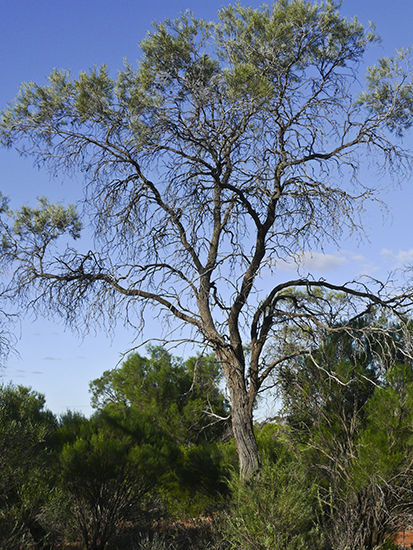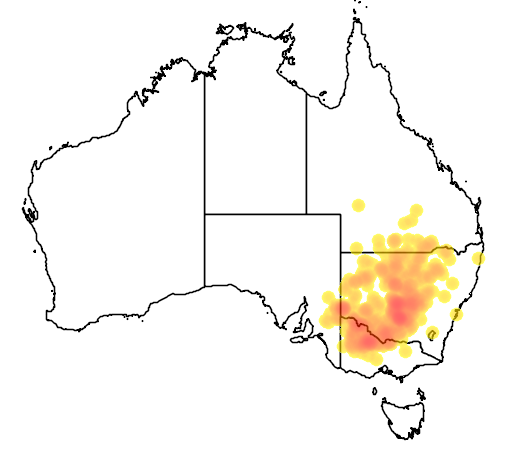Description
Common names
Hooked Needlewood, Striped Hakea, Needlewood.
Scientific names
Hakea tephrosperma.
Family
Proteaceae.
Genus
Hakea.
Name origin
Tephrosperma, from Greek tephro, ash grey and sperma, seed, referring to ash-coloured seed (not always apparent).
Rainfall
300mm.
Growth rate
Slow.
Growth height
3-12m.
Presence in Australia
Not widespread, but more common in west of region. Noted in the areas Brookong; Boree and Narrandera-Morundah-Galore-Collingullie.
This specie has been identified in the following Australian states: Qld, NSW, ACT, Vic, SA.
Habitat
Usually on coarse-textured soils, as individual trees or in dense thickets of shrubby plants.
Habit
Small tree or shrub 3-12m high. Often with drooping branches. Sparse crown of cylindrical leaves 2-9cm long.
Similar species
Distinguished from Needlewood (Hakea leucoptera) by curved points on its leaves, minutely hairy flower stems and dark-coloured seed wing.
Site preference
Very hardy. Tolerates moderate frost.
Flowering
Cream, spring. Attractive spider-like flowers.
Seed collection
Easily collected when seed available, generally winter-spring. Seeds retained on plants.
Propagation
Most Hakeas easily grown from fresh seeds which usually germinate in 3-6 weeks. Direct sow into pots (2 seeds per pot) or into field.
Regeneration
Mainly from root suckers, particularly when protected from grazing.
Timber
Deep-red with attractive "cartwheel" pattern. Turned to produce small ornaments.
Wildlife
Excellent cover for small native birds. Flowers are a food source for honeyeaters.
Ornamental
Attractive woody fruit, and beautiful flowers if mass-planted. Very hardy in cultivation.
Other
Nectar can be sucked from flowers or mixed with water for sweet drink.


